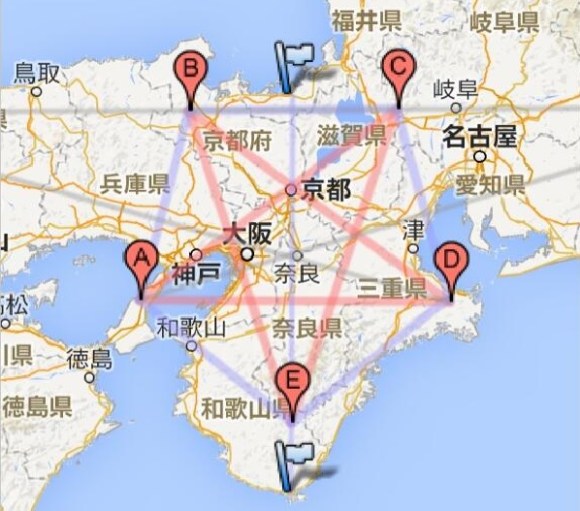
The pentagram is a simple shape with deep meanings. No matter what faith or race we come from that little star seems to conjure up thoughts and feelings more than mere circles or dodecahedrons could ever do to the masses.
So when someone tweeted an image from Google Maps with a pentagram laying upside-down over much of the Kansai Region of Japan, it generated quite a bit of buzz along with 13,000 retweets. It was created by joining several religiously significant locations in the area and has Japan’s ancient capital of Nara smack dab in the center.
■ Points of the star
This pentagram links five special locations together at a distance of one degree of latitude or (assuming they are using a spherical estimation of the earth) about 111km (69 miles). These locations are (using the letters from the image):
A: Izanagi Jingu (Awaji, Hyogo)
This shrine complex is named after Izanagi, the father of Japan in a creation myth. In the legend he and his deity mate Izanami give birth to all the islands of Japan with Awaji Island being the first.
B: Toyuke Daijinja (Fukuchiyama, Kyoto)
Known as an “original Ise Shrine” which means before the creation of Ise Grand Shrine it was the holder of Toyuke Omikami, the goddess of farming and a major deity of the Shinto religion.
C: Mount Ibuki (Ibigawa, Gifu / Maibara, Shiga)
Mount Ibuki has long been a location of strategic importance during more tumultuous times of Japan’s history, but the mountain’s area also contains legends of plants and soils with remarkable healing properties.
D: Ise Jingu (Ise, Mie)
Considered one of the preeminent shrines of Shinto, Ise is actually a sprawling complex of over 100 smaller shrines. It contains the scared mirror Yata No Kagami, a gift given to the imperial family by the goddess Amaterasu.
E: Kumano Hongu Taisha (Tanabe, Wakayama)
This major Shinto shrine can be found well into the Kii mountains of Wakayama. This area is one of the major pilgrimage stops and was declared a World Heritage Site in 2004.
■ Bobosei (Five-Pointed Star)
During the time when Nara was the capital, the pentagram was a powerful symbol of protection used by onmyodo, a type of mysticism derived from Chinese beliefs such as yin and yang and the five elements. The most famous practitioner (onmyoji) of this religion was Abe no Seimei who used the pentagram as a seal to protect from evil as well as his family mon (crest).
Here’s a demonstration of the pentagram in use from the smash hit online music video Let’s Go! Onmyoji.
About a millennium ago onmyoji had a fair bit of clout on the politics of Japan and were called upon by Japan’s elite to handle tricky deeds such as exorcisms and fortune telling. There were also advised when it came to the establishment of things such as the capital, Nara.
So if this tweet’s theory is correct, it’s not surprising that the location would be given some sort of mystical protection through onmyodo. Actually, as many comments pointed out, this theory was not very new either. It was mentioned in several manga and books over the years such as Tenjo Tenge by Oh! great or Sengoku Jietai by Ryo Hanmura.
With the sense that this theory is probably right we’re left with two rather large questions: Why is it upside-down? and Does Tokyo also have some sort of mystical protection?
■ We’re all screwed
Again, this is all under the presumption that this pentagram was intentionally created. First, it’s a little odd that the pentagram is seen with the two bottom points facing upwards which is generally considered bad mojo around the world. The simple assumption would be that the onmyoji of 8th century Japan weren’t overly concerned with how their pentagram would look on Google Maps.
Or were they? The following is a 1656 recreation of the Gyokizu, a map of the Yamato Kingdom created during the Nara period about 900 years before by a Buddhist monk to illustrate the routes of the land. Although there is debate on how authentic this map is to the original(s) it seems to show that folks back then had a pretty decent enough grasp of geography to not accidentally put the pentagram upside-down.
Of course, there’s the possibility that an “upside-down” star may have had no signifigance in onmyodo whatsoever. But there’s also the possibility that someone had made that particular onmyoji a bad cup of tea one day and he just decided to hex everyone in Kansai for eternity.
As for Tokyo, there apparently is a magical seal protecting it as well. Much like the Nara pentagram, the Tokyo shield uses the five elements as laid out in China’s Wu Xing philosophy. The elements are often orientated in a five star pattern and each also has characteristic colors.
So if you’re in the Tokyo area you might want to check out the Goshiki Fudo. Fudo is short for the deity Fudō-myōō also known as Acala. If you happen to be around a Buddhist temple you can’t miss his statue. He’s usually carrying a sword, is engulfed in flames, and has a really pissed off look on his face.
Despite his menacing appearance, he is actually a benevolent force to escort those on the path to enlightenment. Word is that the Goshiki Fudo are five Acala statues with different colored eyes representing each of the five elements.
1 – Black Eyes (Water), Ryusen Temple, Meguro Ward
2 – White Eyes (Metal), Konjoin, Toshima Ward
3 – Red Eyes (Fire), Nankoku Temple, Bunkyo Ward
4 – Green Eyes (Wood), Saisho Temple, Setagaya Ward
5 – Yellow Eyes (Earth), Saisho Temple, Edogawa Ward
*Notice 4 and 5 are different temples even though their names are pronounced the same.
That being said there are a whole bunch of Acala statues everywhere, so true locations may vary if there are any to begin with. Also, word on the net is that the recent construction of the Sky Tree has screwed with this feng shui of Tokyo and opened up the door to misfortune for the metropolis. This may account for the tower’s poor attendance.
Whether or not this is true is anyone’s guess. Meanwhile though, living near the middle of Kansai’s upside-down pentagon has brought closure to a lot of questions regarding my own life such as why I’m not devastatingly handsome or absurdly rich, and why my toast got burned this morning even though I swear I had set the timer to the usual position!
Source: Twitter, My Game News Flash, Green Shinto, Fudo Miyo-O
Video: YouTube – bussan00
Images: Abe no Seimei mon – Wikipedia-Mukai, Five Elements – Wikipedia, Gyokizu – Wikipedia, Kumano – Wikipedia-Miya.m, Ise Jingu – Wikipedia-Tawashi2006, Ibuki – Wikipedia-kazu2011, Toyuke – Wikipedia-As6022014, Izanagi – Wikipedia-ChiefHira, Fudo – Wikipedia
三重の伊勢神宮、和歌山の熊野本宮大社、岐阜の伊吹山、京都の外宮豊受大神社、兵庫淡路島の伊奘諾神宮っていう重要な神社と霊山を一緯度の長さで結ぶと都を護る大五芒星ができるらしい。すげぇ pic.twitter.com/oRLYz9Tkuo
— きゃべつ (@auuuuuuru1111) May 7, 2014

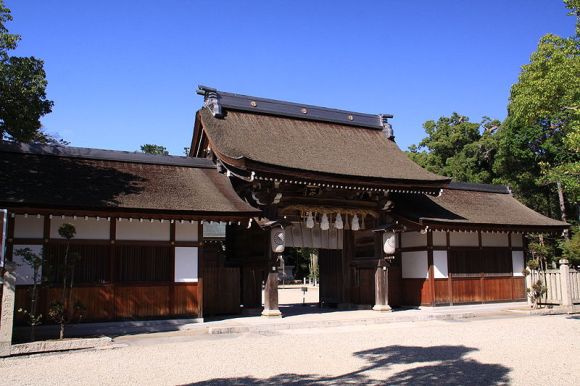
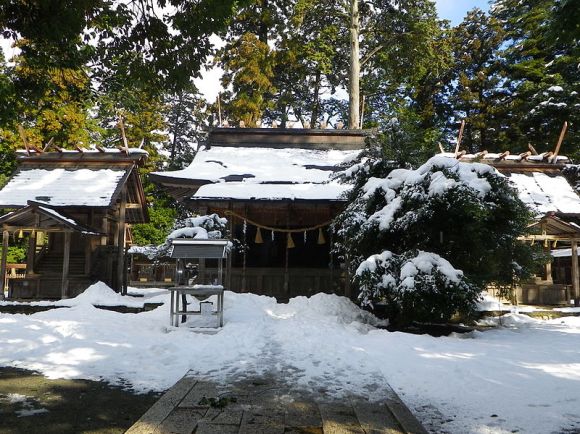
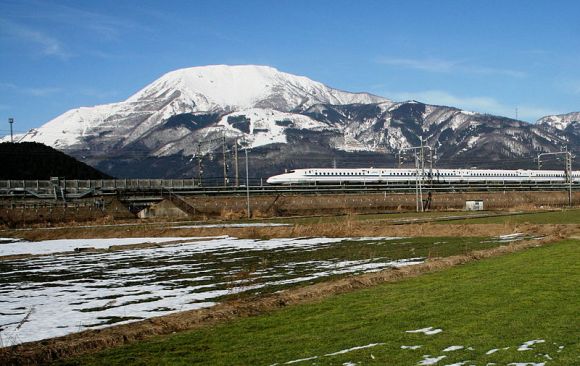
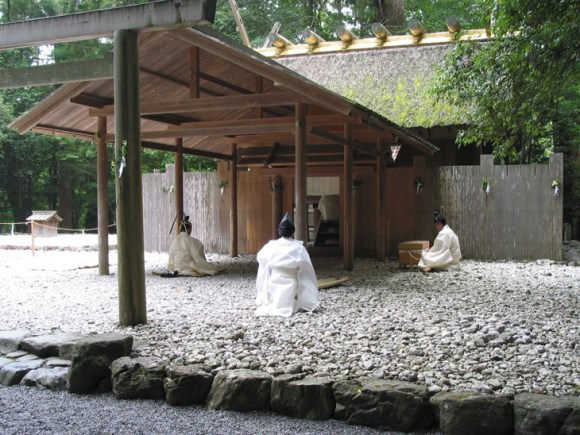
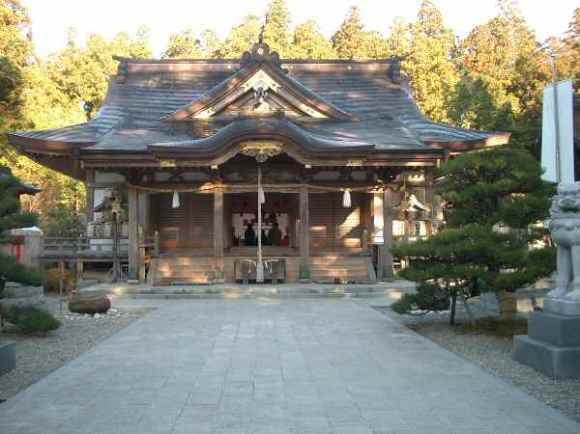
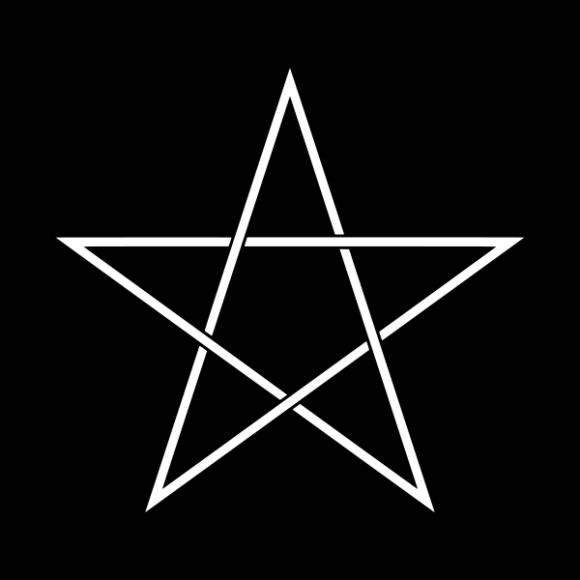
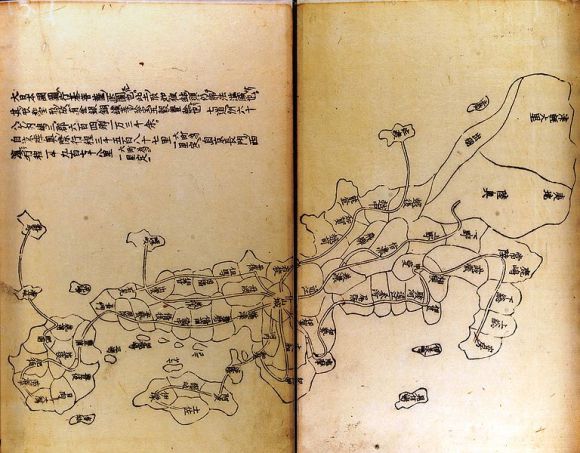

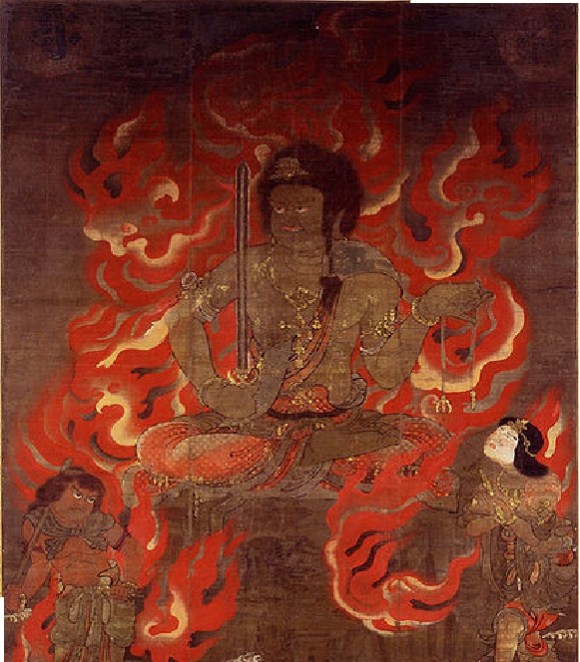
 We revisited Sweets Paradise after a decade to see if Japan’s dessert buffet still delivers
We revisited Sweets Paradise after a decade to see if Japan’s dessert buffet still delivers Five uninhabited Japanese islands you can buy right now
Five uninhabited Japanese islands you can buy right now Japanese woman finds better way to make potato salad, we may not be able to go back to old style
Japanese woman finds better way to make potato salad, we may not be able to go back to old style Bandai to release super-mega-retro-robot made up of Doraemon and friends
Bandai to release super-mega-retro-robot made up of Doraemon and friends Studio Ghibli releases new action figures featuring Nausicaä of the Valley of the Wind characters
Studio Ghibli releases new action figures featuring Nausicaä of the Valley of the Wind characters We revisited Sweets Paradise after a decade to see if Japan’s dessert buffet still delivers
We revisited Sweets Paradise after a decade to see if Japan’s dessert buffet still delivers Five uninhabited Japanese islands you can buy right now
Five uninhabited Japanese islands you can buy right now Japanese woman finds better way to make potato salad, we may not be able to go back to old style
Japanese woman finds better way to make potato salad, we may not be able to go back to old style Bandai to release super-mega-retro-robot made up of Doraemon and friends
Bandai to release super-mega-retro-robot made up of Doraemon and friends Studio Ghibli releases new action figures featuring Nausicaä of the Valley of the Wind characters
Studio Ghibli releases new action figures featuring Nausicaä of the Valley of the Wind characters Get ready with Roland, the top-earning host in Japan【Video】
Get ready with Roland, the top-earning host in Japan【Video】 Sanrio theme park in Japan announces plans to expand into a Sanrio resort
Sanrio theme park in Japan announces plans to expand into a Sanrio resort Every piece of Hayao Miyazaki’s Ghibli anime concept art to be published in new book series
Every piece of Hayao Miyazaki’s Ghibli anime concept art to be published in new book series English teachers in Japan apologize for having low-proficiency kids say “poison” in assigned video
English teachers in Japan apologize for having low-proficiency kids say “poison” in assigned video Tokyo’s Haneda Airport is adding a giant Godzilla statue to its international terminal
Tokyo’s Haneda Airport is adding a giant Godzilla statue to its international terminal Starbucks Japan ready to get Year of the Horse started with adorable drinkware and plushies【Pics】
Starbucks Japan ready to get Year of the Horse started with adorable drinkware and plushies【Pics】 Cyberpunk anime meets traditional culture in Ghost in the Shell gold leaf Japanese changing screens
Cyberpunk anime meets traditional culture in Ghost in the Shell gold leaf Japanese changing screens 7 great places to see Mt. Fuji from without having to climb it
7 great places to see Mt. Fuji from without having to climb it Hello Kitty Choco Egg figures are an adorable trip through three periods of Japanese pop culture【Pics】
Hello Kitty Choco Egg figures are an adorable trip through three periods of Japanese pop culture【Pics】 7-Eleven Japan’s ramen-cooking robot whipped us up a bowl of noodles【Taste test】
7-Eleven Japan’s ramen-cooking robot whipped us up a bowl of noodles【Taste test】 We found possibly the quietest Japanese-style hotel in Tokyo’s bustling Shinjuku district
We found possibly the quietest Japanese-style hotel in Tokyo’s bustling Shinjuku district Japan’s otoshidama tradition of giving kids money at New Year’s gets a social welfare upgrade
Japan’s otoshidama tradition of giving kids money at New Year’s gets a social welfare upgrade Sumo Sanrio! Hello Kitty and pals team up with Japan Sumo Association for new merch【Pics】
Sumo Sanrio! Hello Kitty and pals team up with Japan Sumo Association for new merch【Pics】 More Than a Capsule Stay: Why Solo Travelers Choose “global cabin Yokohama Chinatown”
More Than a Capsule Stay: Why Solo Travelers Choose “global cabin Yokohama Chinatown” Japan’s oldest largetooth sawfish in captivity back on display in Mie Prefecture
Japan’s oldest largetooth sawfish in captivity back on display in Mie Prefecture 7-Eleven Japan starts new temporary luggage storage service in over 300 branches
7-Eleven Japan starts new temporary luggage storage service in over 300 branches Disillusionment at Tsukiji’s tourist-target prices led us to a great ramen restaurant in Tokyo
Disillusionment at Tsukiji’s tourist-target prices led us to a great ramen restaurant in Tokyo Starbucks teams up with 166-year-old Kyoto doll maker for Year of the Horse decorations【Photos】
Starbucks teams up with 166-year-old Kyoto doll maker for Year of the Horse decorations【Photos】 Tokyo considering law requiring more trash cans following litter increase in heavily touristed area
Tokyo considering law requiring more trash cans following litter increase in heavily touristed area Tokyo’s Tsukiji sushi neighborhood asks tour groups to stay away for the rest of the month
Tokyo’s Tsukiji sushi neighborhood asks tour groups to stay away for the rest of the month Tokyo event lets you travel back in time, for free, to celebrate 100 years since Showa era start
Tokyo event lets you travel back in time, for free, to celebrate 100 years since Showa era start Japan may add Japanese language proficiency, lifestyle classes to permanent foreign resident requirements
Japan may add Japanese language proficiency, lifestyle classes to permanent foreign resident requirements Stamina-destroying “Paralysis Noodles” are Tokyo’s newest over-the-top ramen innovation
Stamina-destroying “Paralysis Noodles” are Tokyo’s newest over-the-top ramen innovation Survey asks foreign tourists what bothered them in Japan, more than half gave same answer
Survey asks foreign tourists what bothered them in Japan, more than half gave same answer Japan’s human washing machines will go on sale to general public, demos to be held in Tokyo
Japan’s human washing machines will go on sale to general public, demos to be held in Tokyo Japan’s deadliest food claims more victims, but why do people keep eating it for New Year’s?
Japan’s deadliest food claims more victims, but why do people keep eating it for New Year’s? We deeply regret going into this tunnel on our walk in the mountains of Japan
We deeply regret going into this tunnel on our walk in the mountains of Japan Studio Ghibli releases Kodama forest spirits from Princess Mononoke to light up your home
Studio Ghibli releases Kodama forest spirits from Princess Mononoke to light up your home Major Japanese hotel chain says reservations via overseas booking sites may not be valid
Major Japanese hotel chain says reservations via overseas booking sites may not be valid Put sesame oil in your coffee? Japanese maker says it’s the best way to start your day【Taste test】
Put sesame oil in your coffee? Japanese maker says it’s the best way to start your day【Taste test】 No more using real katana for tourism activities, Japan’s National Police Agency says
No more using real katana for tourism activities, Japan’s National Police Agency says Starbucks Japan reveals new sakura drinkware collection, inspired by evening cherry blossoms
Starbucks Japan reveals new sakura drinkware collection, inspired by evening cherry blossoms Updated cherry blossom forecast shows extra-long sakura season for Japan this year
Updated cherry blossom forecast shows extra-long sakura season for Japan this year Get ready with Roland, the top-earning host in Japan【Video】
Get ready with Roland, the top-earning host in Japan【Video】 Sanrio theme park in Japan announces plans to expand into a Sanrio resort
Sanrio theme park in Japan announces plans to expand into a Sanrio resort Every piece of Hayao Miyazaki’s Ghibli anime concept art to be published in new book series
Every piece of Hayao Miyazaki’s Ghibli anime concept art to be published in new book series English teachers in Japan apologize for having low-proficiency kids say “poison” in assigned video
English teachers in Japan apologize for having low-proficiency kids say “poison” in assigned video Tokyo’s Haneda Airport is adding a giant Godzilla statue to its international terminal
Tokyo’s Haneda Airport is adding a giant Godzilla statue to its international terminal We encountered the most frightening fried chicken in Ameyokocho in Tokyo, and ate it anyway
We encountered the most frightening fried chicken in Ameyokocho in Tokyo, and ate it anyway Princesses, fruits, and blacksmiths: Study reveals the 30 most unusual family names in Japan
Princesses, fruits, and blacksmiths: Study reveals the 30 most unusual family names in Japan The best Starbucks Japan Frappuccinos we want to drink again in 2026
The best Starbucks Japan Frappuccinos we want to drink again in 2026 Testing 23 different yakiniku dipping sauces from the Japanese supermarket to find the top three
Testing 23 different yakiniku dipping sauces from the Japanese supermarket to find the top three We try it out: Does Uniqlo’s HeatTech Ultra Warm work on a motorbike ride in the dead of winter?
We try it out: Does Uniqlo’s HeatTech Ultra Warm work on a motorbike ride in the dead of winter? From beef bowl to beef pouch? Taste testing Yoshinoya’s instant gyudon packs
From beef bowl to beef pouch? Taste testing Yoshinoya’s instant gyudon packs
Leave a Reply